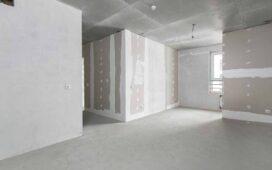Sewer lines are the uninvited guests of homeownership – always present, rarely thought about, until they cause chaos. Take the uncertainty out of sewer pipe maintenance with expert advice on assessing pipe health and choosing the right fix-it approach – a safeguard for homeowners.
Potential disasters become a whole lot less daunting when you take this simple precaution, and that’s a huge weight off any homeowner’s shoulders. To get the most out of your property, think about the long game – planning for durability now means you’ll avoid costly repairs and replacements down the line.
Recognizing when it may be time to replace or repair requires understanding the signs of trouble brewing beneath your home’s surface. So, let’s uncover those telltale indicators next.
Assessing Sewer Line Condition
In assessing the condition of a sewer line, homeowners should be alert to key indicators. Slow drains and bad odors emanating from sinks can point toward blockages or breaks in your sewer pipes. If multiple fixtures are draining sluggishly, it’s typically more than just a localized clog; likely, an issue deep within the system requires immediate attention.
Persistent drainage problems suggest the potential for extensive damage that might necessitate full sewer pipe repair services or replacement. Taking action early when noticing frequent backups prevents hazardous sewage incidents indoors and maintains household plumbing efficiency.
Choosing the Right Replacement Method
When embarking on sewer line replacement, verification of the company’s licenses and bonds is pivotal. Legitimacy assures you that their team possesses ample knowledge across various systems underpinned by substantial experience in the field. Opt for a high-grade video inspection; it should chart out immediate concerns, pipe length, branch connection sites plus counts, and diameter shifts.
Parsing through reports detailing problems allows shrewd method selection tailored to specific situations encountered within your pipe scale. Whether opting for trenchless bursting with HDPE pipelines or less intrusive lining solutions. All hinge upon damage extent weighed against potential infrastructural upheaval traditional methods may entail.
A critical calculus ensuring optimal outcomes vis-à-vis cost-efficiency and property preservation considerations.
Planning for Long-Term Durability
Planning for long-term durability in sewer line replacement requires meticulous material selection and professional expertise. PVC, a cost-effective choice, resists corrosion well; however, HDPE’s flexibility proves superior against temperature changes and chemical exposure. Traditional materials like clay pipes tempt with longevity but demand vigilance against roots; equally enduring cast iron offers robustness, albeit heavier installation demands.
Premium stainless steel prevails in combating decay yet comes at a steeper price point. Engaging seasoned professionals familiar with your chosen pipe type ensures proficiency. Vital to extend the service life of the new infrastructure.
Thus safeguarding your investment from premature failures or excessive maintenance costs.
When dealing with sewer line replacement, homeowners should carefully assess the situation. Look for signs of damage and consult experts like American Plumbing and Water Damage Restoration to understand your options. Professionals provide valuable insights into materials, costs, potential disruptions, and long-term solutions.
Prioritize choosing a team that emphasizes quality workmanship to ensure durability while minimizing future issues. Always remember that preventive maintenance can help detect problems early on for more cost-effective repairs than full replacements.







